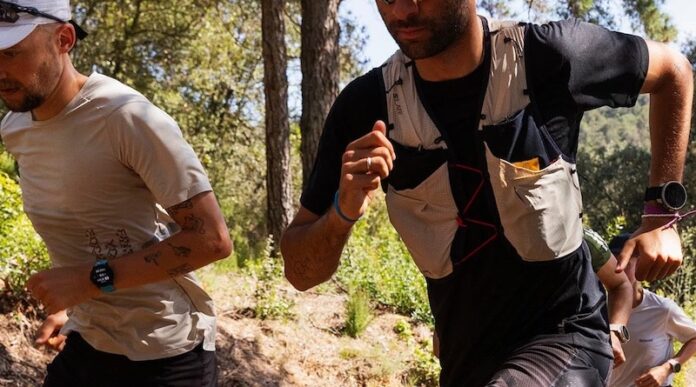Suunto has expanded its fitness ecosystem with the launch of the ZoneSense app, a tool designed to deliver more precise heart rate zone tracking, by adjusting heart rate zones in real-time based on heart rate variability (HRV).
Unlike typical smartwatches that primarily track HRV during sleep and provide basic recovery assessments, ZoneSense takes a different approach by utilizing HRV metrics dynamically throughout workouts. The idea here is to provide a more accurate and responsive measurement of exercise intensity, catering to the needs of serious endurance athletes. Its something that Garmin and other well established brands do not offer at the moment.
ZoneSense – the basics explained
At the heart of ZoneSense are three distinct heart rate zones: aerobic, anaerobic, and VO2max, represented by green, yellow, and red respectively. So it’s a bit simpler categorisation that for typical heart rate or power zone training.
To ensure good accuracy in HRV data collection, ZoneSense requires a compatible chest strap, such as the Suunto Smart Belt or the Polar H10. Unlike wrist-based monitors, chest straps provide reliable HRV data, which is essential for the app’s real-time adjustments during workouts. So a watch by itself is not enough.

In essence, the app measures the heart’s stress levels during exercise, enabling athletes to tailor their training efforts to their current physiological state. This dynamic adjustment is particularly beneficial during long endurance activities, where factors like temperature and altitude can cause significant fluctuations in heart rate. By adapting to these changes, ZoneSense helps you find the right workout intensity.
You can analyse your performance both in real-time and post-workout. The underlying technology leverages correlations derived from RR intervals. The company says all of this was done in collaboration with Tampere University and patented through Monicardi. And that its algorithm is specifically tailored for endurance sports, making it less suited for activities like strength training or short interval workouts.
To fully utilise ZoneSense, you need to undergo a ramp test to establish baseline metrics such as lactate threshold levels. These baselines are refined through repeated workouts, with aerobic efforts helping to enhance the accuracy of the data.
The limitations
However, ZoneSense does come with a few limitations. A minimum of a ten-minute warm-up is required before the platform can provide accurate data. But then again, you should be doing warmups anyway.
The app does not support optical armbands or wrist-based heart rate monitors, limiting its use to those who invest in compatible chest straps. Again – not a deal-breaker. Most people serious about training have one of these.
Essential reading: Top fitness trackers and health gadgets
Also worth a mention is that the current study sample size for ZoneSense is relatively small, with most testing conducted in controlled environments. This means that while initial results are promising, broader real-world testing is necessary to fully validate the app’s effectiveness.
In any case, this is a nice addition to Suunto’s platform. By dynamically adjusting heart rate zones based on real-time variability, the app offers a innovative approach to training intensity.
The app can be downloaded from the SuuntoPlus Store. The company says that for real-time tracking, it works with Suunto 9 Peak Pro, Suunto Vertical, Suunto Race, and Suunto Race S.
Source: Suunto
Like this article? Subscribe to our monthly newsletter and never miss out!


